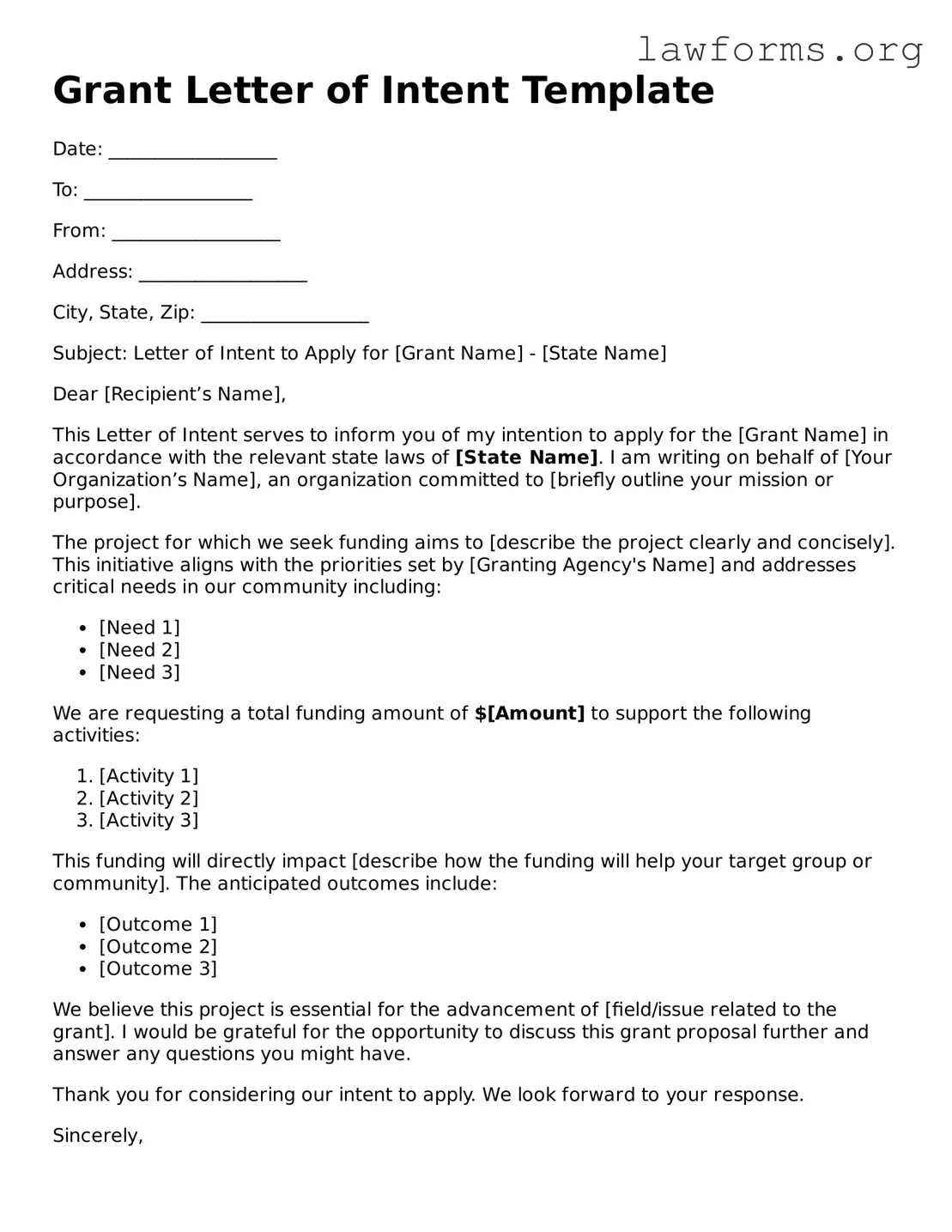Grant Letter of Intent Template
Date: __________________
To: __________________
From: __________________
Address: __________________
City, State, Zip: __________________
Subject: Letter of Intent to Apply for [Grant Name] - [State Name]
Dear [Recipient’s Name],
This Letter of Intent serves to inform you of my intention to apply for the [Grant Name] in accordance with the relevant state laws of [State Name]. I am writing on behalf of [Your Organization’s Name], an organization committed to [briefly outline your mission or purpose].
The project for which we seek funding aims to [describe the project clearly and concisely]. This initiative aligns with the priorities set by [Granting Agency's Name] and addresses critical needs in our community including:
- [Need 1]
- [Need 2]
- [Need 3]
We are requesting a total funding amount of $[Amount] to support the following activities:
- [Activity 1]
- [Activity 2]
- [Activity 3]
This funding will directly impact [describe how the funding will help your target group or community]. The anticipated outcomes include:
- [Outcome 1]
- [Outcome 2]
- [Outcome 3]
We believe this project is essential for the advancement of [field/issue related to the grant]. I would be grateful for the opportunity to discuss this grant proposal further and answer any questions you might have.
Thank you for considering our intent to apply. We look forward to your response.
Sincerely,
[Your Name]
[Your Title]
[Your Organization’s Name]
[Your Phone Number]
[Your Email Address]
